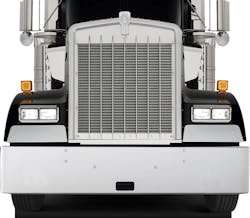Profit margins for trucking companies on the rise
By Mary Ellen Biery, Sageworks
U.S. trucking companies are coming off a year of improved sales growth and profitability, according to data compiled by Sageworks, a financial information company. And according to Mary Ellen Biery, a research specialist with the firm, 2018 could mark the start of several years of strong results due to tight capacity and improving demand. Note: Through its cooperative data model, Sageworks collects and aggregates financial statements for private companies from accounting firms, banks and credit unions. Net profit margin has been adjusted to exclude taxes and include owner compensation in excess of their market-rate salaries. These adjustments are commonly made to private company financials in order to provide a more accurate picture of the companies’ operational performance.
Privately held general freight trucking companies watch their sales expand in 2017 on average 14.9%, while profit margins expanded to 6%, compared to the past average of between 2.4% and 4% over the last six years. Those numbers – based preliminary financial statement analysis by Sageworks – puts the industry in its strongest sales growth since 2014, when sales increased about 17%. Sales growth that year was driven by a North American cold wave and wintry start to 2014 that disrupted transportation networks and boosted rates, according to multiple industry experts.
“From what I can see, 2017 was definitely an improvement over 2016, and what’s really exiting for trucking companies is that 2018 looks like it could be one the best years ever,” provided carriers manage well through the changing environment, noted David Roush, president of KSM Transport Advisors, a financial advisory services company serving trucking and logistics segments of the transportation industry.
Truckload carriers saw rates challenged in 2016 and early 2017 as shippers clawed back pricing gains spurred by the 2014 market dynamics, he said, but by the second half of 2017, rates began improving again for trucking companies as demand strengthened and trucking capacity tightened.
The federal electronic logging device (ELD) mandate put in place last December may also prompt some drivers opposing the idea of added technology or monitoring to retire early, although the full impact won’t be known until serious enforcement begins, Roush said, which will be April 1, according to the Commercial Vehicle Safety Alliance.
Jonathan Starks, chief operating officer at trucking research firm FTR, said in a recent industry overview that fleets have been running very efficiently over the past few years, with capacity utilization in the high 90% range.
“Couple this efficiency with increases in freight volumes and productivity hits due to weather and regulations, and it’s no surprise to the industry that the end of 2017 and the beginning of 2018 have been good for carriers,” he explained. “We are seeing robust orders for trucks and trailers, serious recruitment drives, and the type of rate increases which make these expenditures feasible. In terms of the overall economy and freight demand, we are looking at strong potential for further upside possibilities for carriers.”
Other factors contributing to tight capacity are: the improving economy, low unemployment and an aging trucking-industry workforce. “The average age for drivers is 52 years old, compared to 42 for the workforce as a whole,” noted KSM’s Roush. “In addition, drivers must be at least 21 years old in order to operate a commercial motor vehicle in interstate commerce, so many high school graduates move on to other jobs without considering a trucking career.”
Shippers are also working to identify capacity for the year and he said he’s heard anecdotally that some large shippers didn’t establish a budget for transportation costs this year because they know they will be high.
On the flip side, wage pressures are likely to present a headwind to trucking companies’ profitability, but the tailwind of the supply and demand dynamics will likely far outweigh it, Roush noted. “This [2018] is going to be a good year,” he said. “It will have to be a very bad operator to lose money, unless they have a bad capital structure.”
According to the Census Bureau, most general freight trucking companies in the U.S. are small businesses with less than 20 employees and while there are positives and negatives for being a small firm, their size might position them to adjust quickly to market needs. As long as they have the staff to scale up, they can take advantage of the increasing sales, according to Sageworks.
